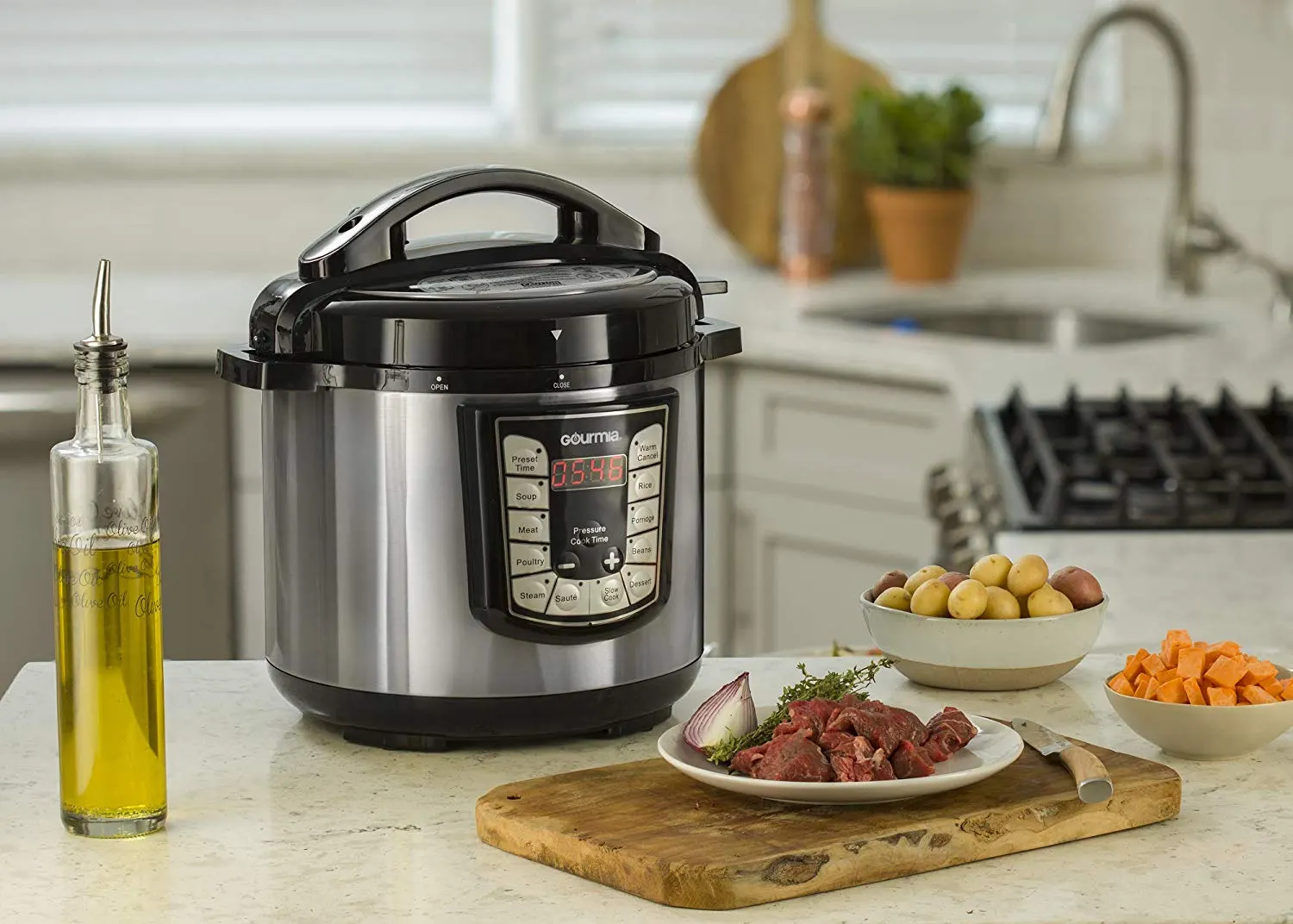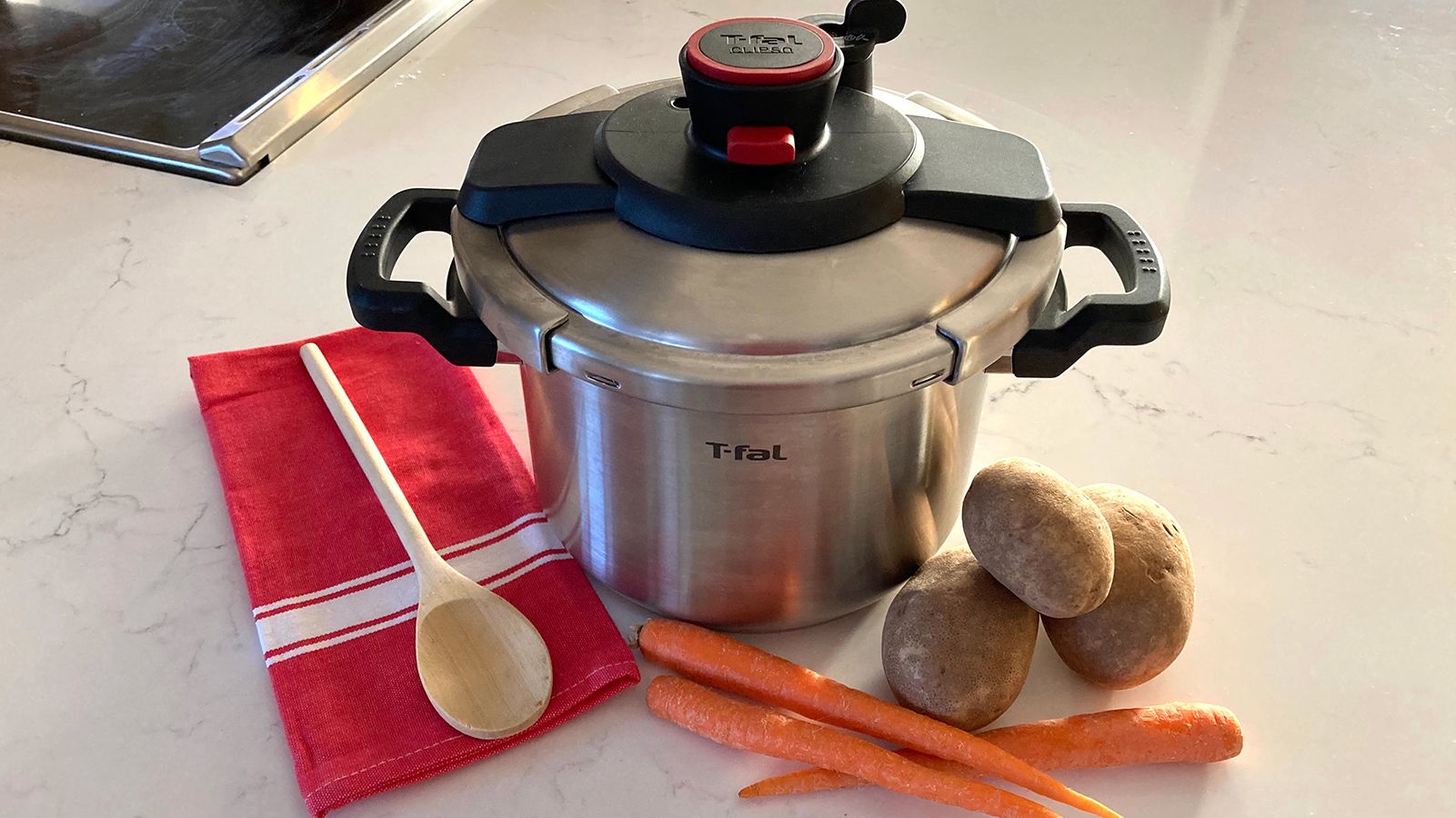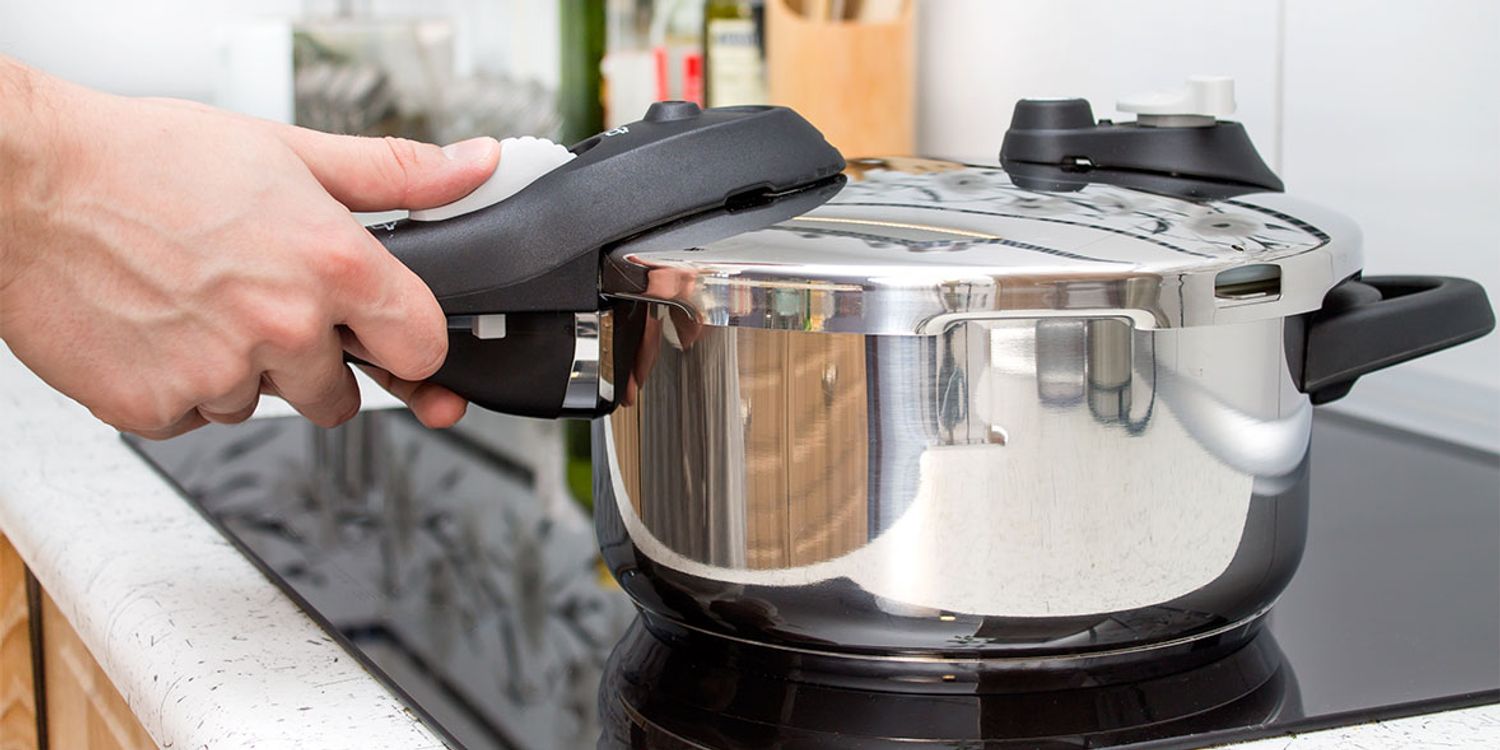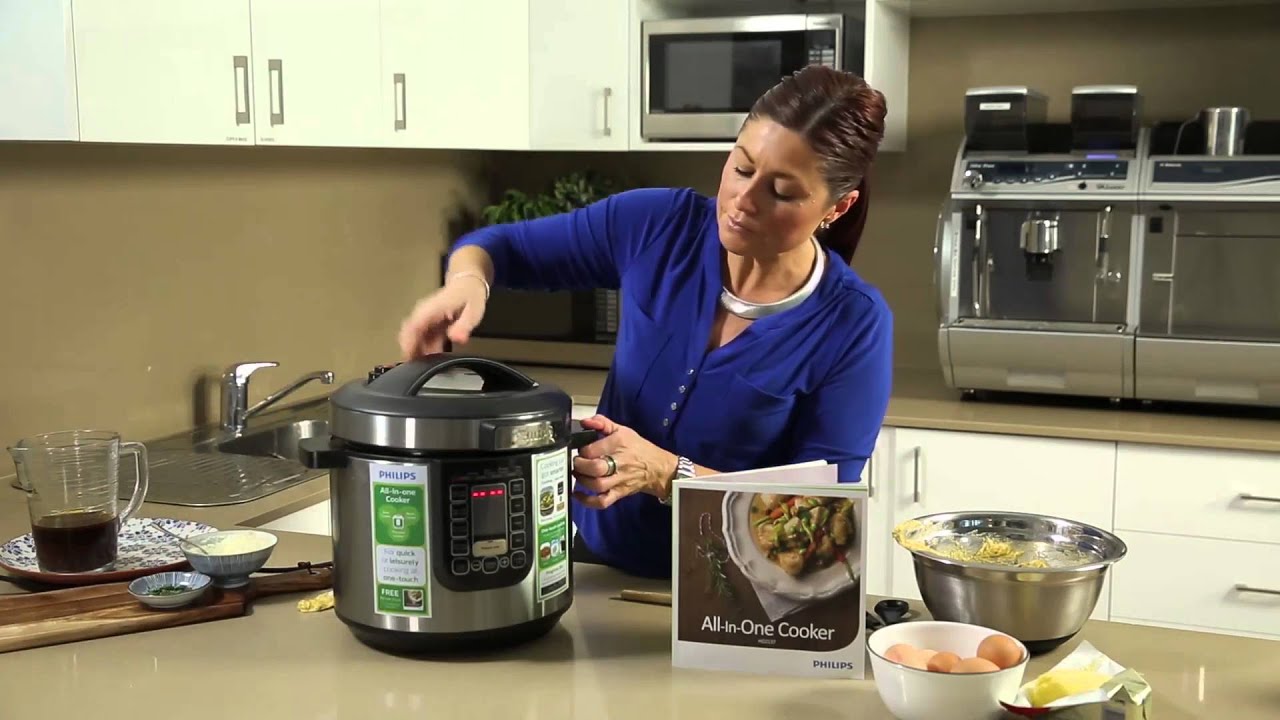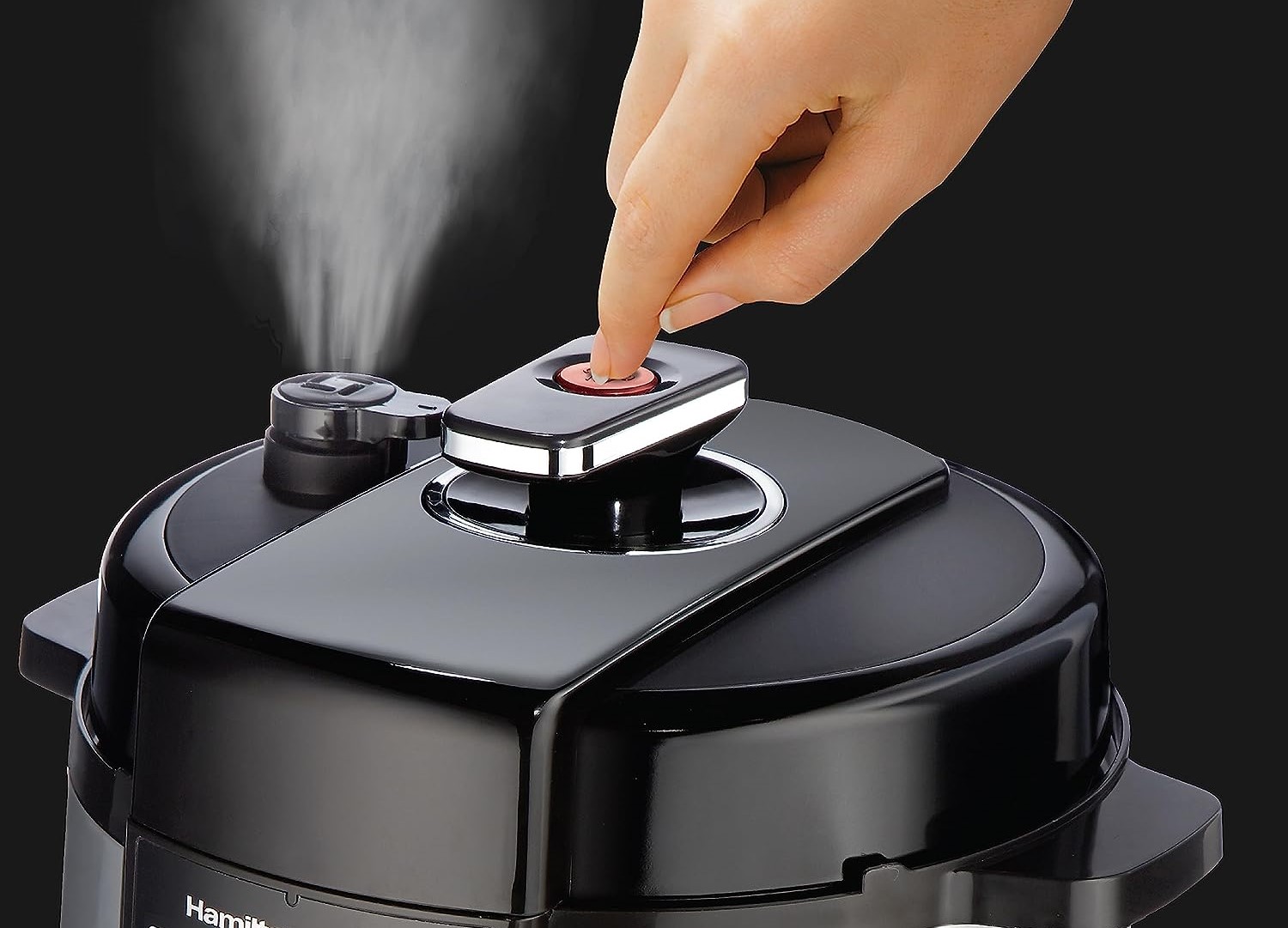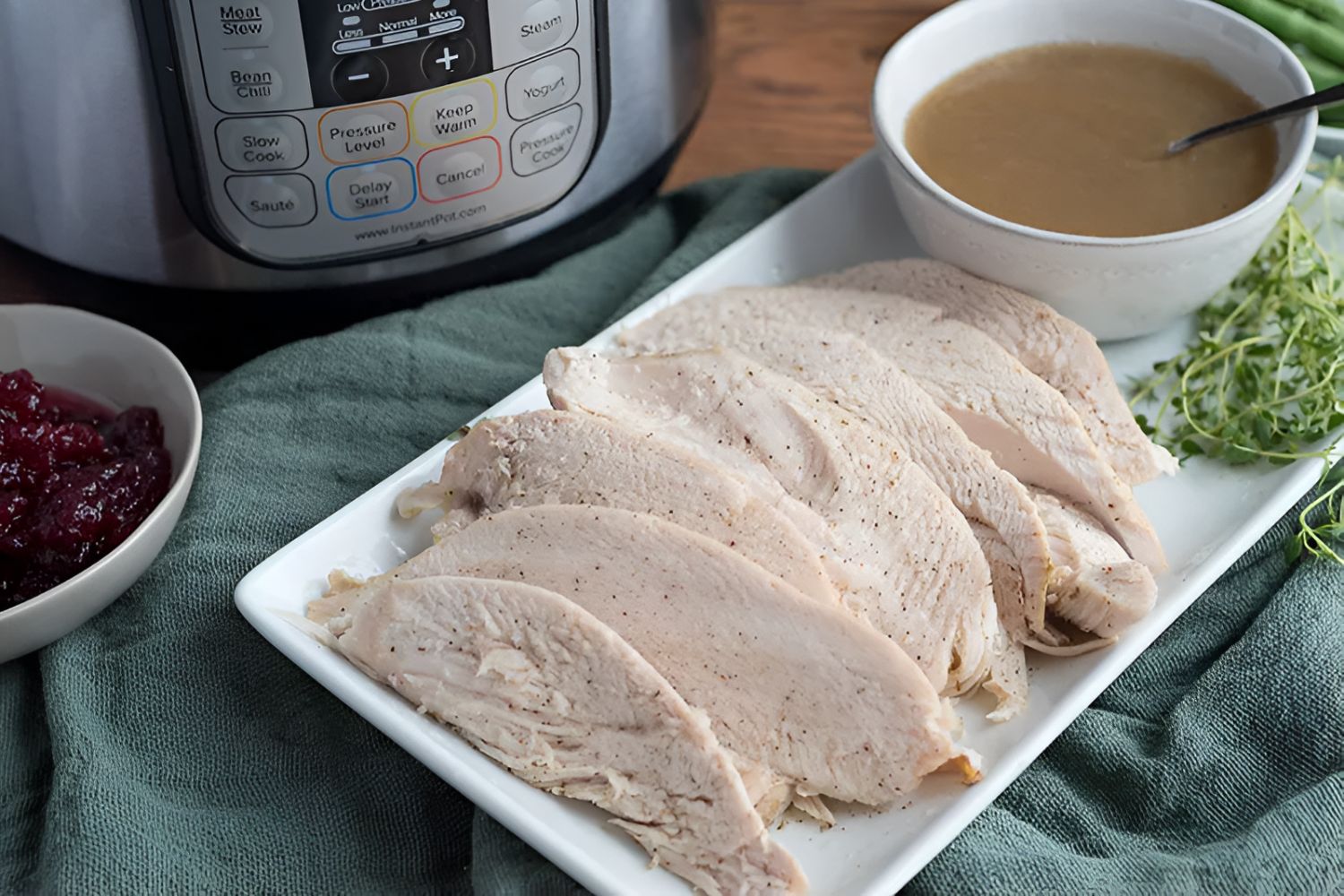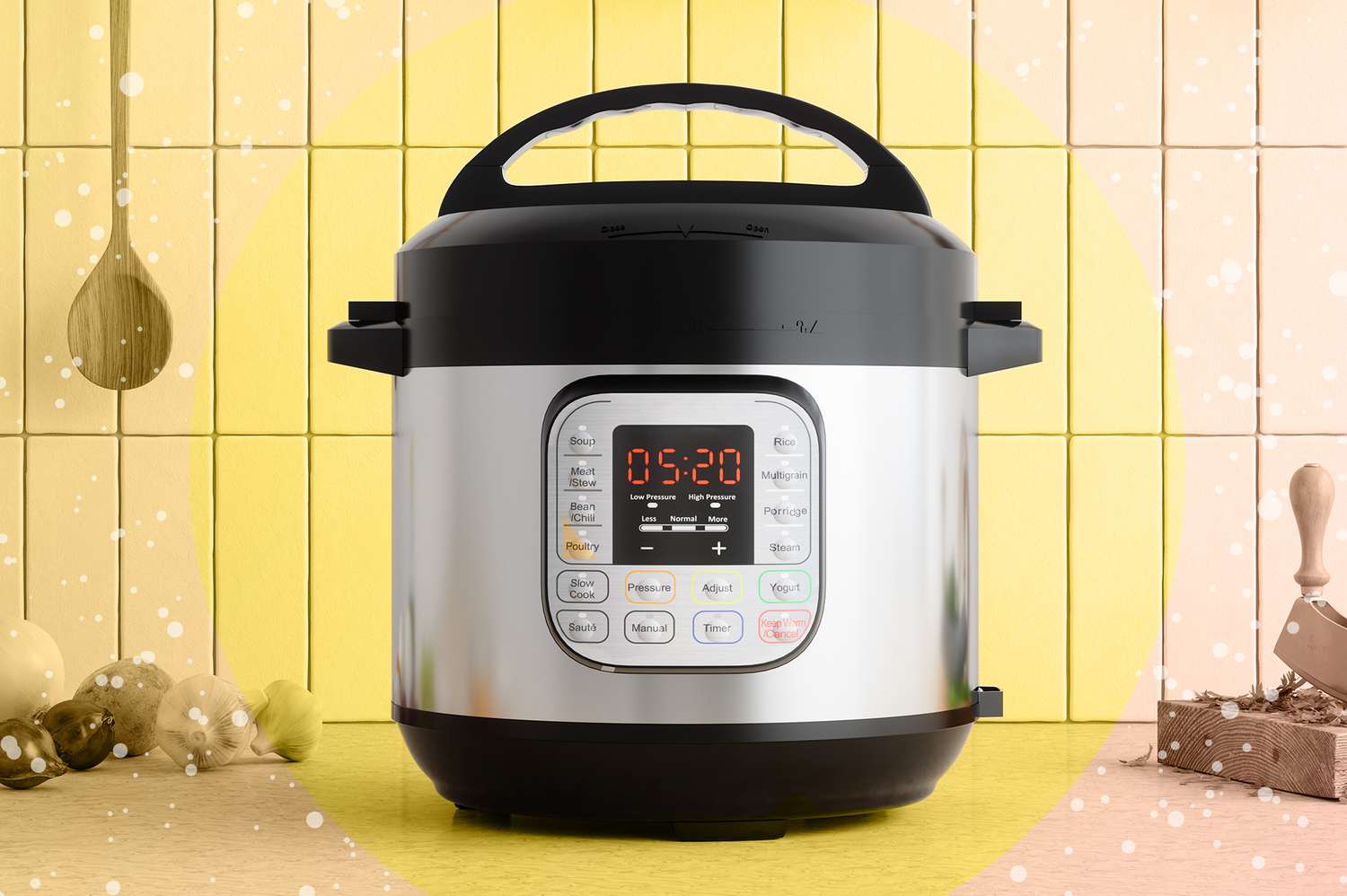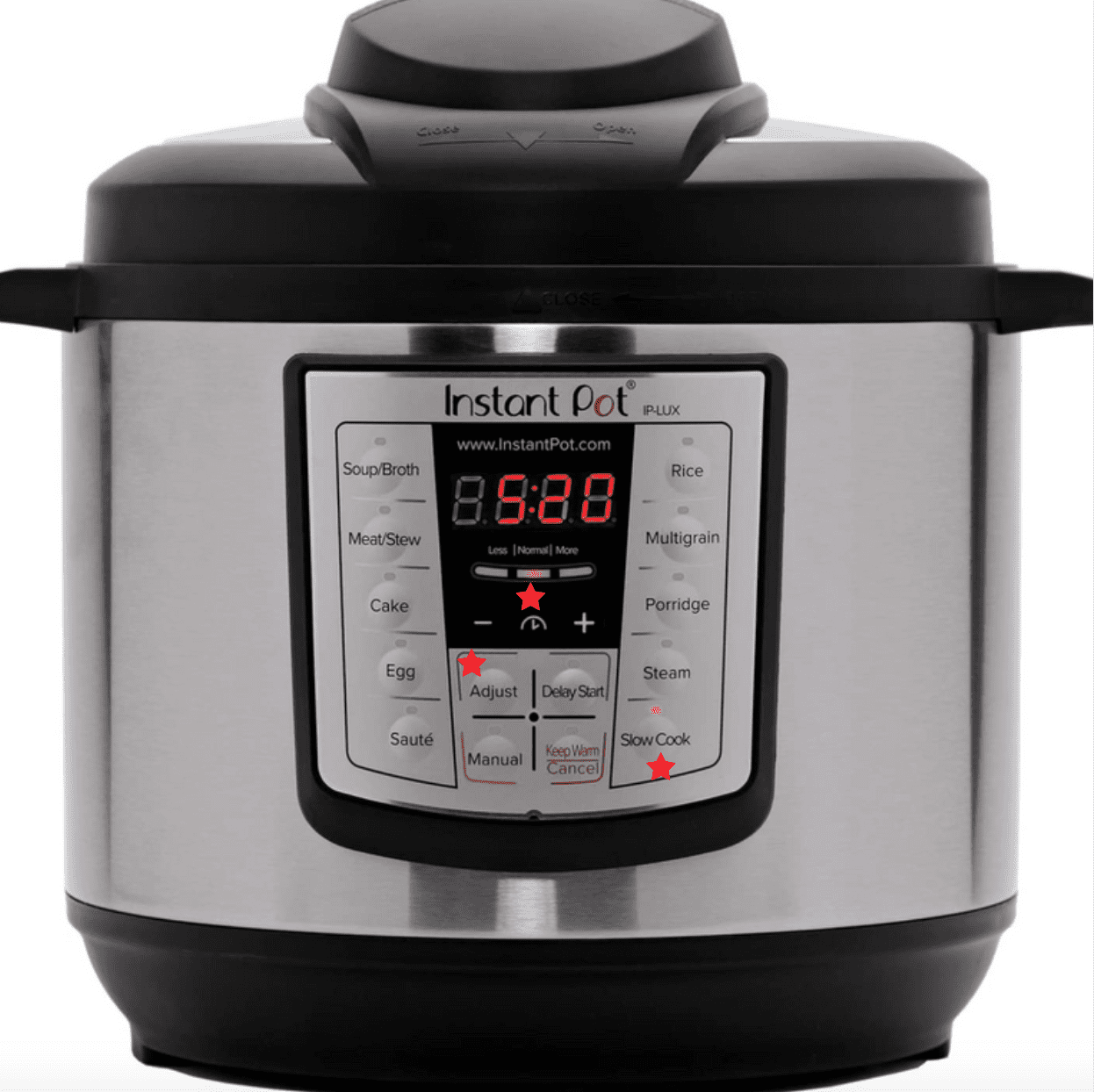Introduction
Welcome to the fascinating and time-saving world of electric pressure cookers! If you’re tired of spending hours in the kitchen, waiting for your meals to cook, then an electric pressure cooker is your perfect kitchen companion. With its ability to cook food faster and retain flavors, an electric pressure cooker has become a must-have appliance for many households.
In this article, we will guide you on how to open an electric pressure cooker safely and efficiently. We will walk you through the necessary steps, from unpacking the cooker to familiarizing yourself with its parts, and finally opening it up to prepare your delectable meal.
Opening an electric pressure cooker might seem like a simple task, but it’s important to do it correctly to avoid any accidents or damage to the cooker. By following the steps and safety precautions outlined in this article, you will be able to confidently open your electric pressure cooker and unleash its culinary potential.
Before we dive into the process of opening the cooker, let’s take a moment to highlight some essential safety precautions to keep in mind while handling an electric pressure cooker.
Safety Precautions
When it comes to handling any kitchen appliance, safety should always be a top priority. Electric pressure cookers can reach high temperatures and build up pressure, so it’s crucial to follow these safety precautions:
- Read and familiarize yourself with the instruction manual provided by the manufacturer. Different models of electric pressure cookers may have specific safety guidelines that you need to be aware of.
- Before attempting to open the pressure cooker, ensure that the pressure release valve is in the “release” or “vent” position. This will prevent any accidental steam releases.
- Always use oven mitts or heat-resistant gloves when handling the pressure cooker to protect yourself from burns. The cooker and its parts can become extremely hot during and after cooking.
- Never force open the pressure cooker. If you’re having trouble opening it, it might still be under pressure. Allow it to cool down completely before attempting to open it.
- Regularly inspect the rubber gasket or sealing ring and ensure it’s in good condition. If it’s worn out or damaged, it may affect the sealing and increase the chances of accidents. Replace it if necessary.
- Ensure that the pressure cooker is placed on a stable and heat-resistant surface. Avoid using it near flammable materials or on uneven surfaces that can cause instability.
- Keep the pressure cooker away from children and pets. Never leave it unattended while it’s under pressure or in use.
- Release the pressure completely before opening the cooker. Follow the instructions provided by the manufacturer to safely release the pressure.
By following these safety precautions, you can confidently handle your electric pressure cooker and reduce the risk of accidents or injuries. Now that we’ve covered the safety aspects, let’s move on to unpacking the electric pressure cooker.
Unpacking the Electric Pressure Cooker
Once you have purchased your new electric pressure cooker, it’s time to unpack it and get ready to embark on your culinary adventures. Follow these steps to unpack your electric pressure cooker safely:
- Find a suitable area in your kitchen with enough space to unpack and set up the cooker.
- Remove the external packaging carefully, ensuring not to damage the appliance.
- Inspect the cooker for any visible signs of damage. If you notice any, contact the manufacturer or the place of purchase for assistance.
- Remove all the protective padding and materials from the cooker. Pay attention to any stickers or labels that provide important information.
- Thoroughly clean the inner pot, lid, and other accessories that come with the cooker. Use warm soapy water and a soft cloth to remove any dust or residue.
- Check if all the accessories are included as per the manufacturer’s specifications. This may include a steam rack, measuring cup, and a serving spoon.
- Set aside the instruction manual and keep it in a safe place for future reference.
By carefully unpacking your electric pressure cooker and ensuring that all the necessary components are intact, you are ready to move on to the next step: familiarizing yourself with the different parts of the pressure cooker.
Familiarizing Yourself with the Pressure Cooker Parts
Before diving into the world of pressure cooking, it’s essential to familiarize yourself with the various parts of your electric pressure cooker. Understanding the different components will help you operate the cooker more efficiently and navigate through its functions. Here are the key parts of an electric pressure cooker:
- Lid: The lid of the pressure cooker seals the pot to create a pressurized cooking environment. It usually has a locking mechanism to ensure a secure fit.
- Handle: The handle on the lid allows you to grip and hold it safely. It should remain cool to the touch during cooking.
- Control Panel: The control panel houses the buttons and display screen, allowing you to set the cooking time, pressure level, and other cooking functions.
- Pressure Release Valve: This valve controls the release of steam and pressure from the cooker. It can be manually adjusted to different settings, such as “sealing” or “venting.”
- Sealing Ring: The sealing ring, also known as the rubber gasket, is located within the lid. It provides an airtight seal to lock in the pressure and prevent steam from escaping.
- Inner Pot: The inner pot is where you place the ingredients for cooking. It’s usually made of stainless steel and has measurement markings for convenience.
- Steam Rack: The steam rack is a removable accessory that sits at the bottom of the inner pot. It elevates food from direct contact with the liquid to allow for proper steaming or cooking.
- Condensation Collector: Some pressure cookers have a condensation collector to collect excess moisture during cooking, preventing it from dripping onto the countertop.
- Power Cord: The power cord connects the pressure cooker to an electrical outlet for operation.
By familiarizing yourself with these parts, you will have a better understanding of how your electric pressure cooker works and be able to utilize its features effectively. Now that you know the different components of the cooker, let’s move on to preparing the pressure cooker for use.
Preparing the Pressure Cooker for Use
Before you start using your electric pressure cooker, it’s important to ensure that it’s prepared correctly. Proper preparation will help you achieve optimal cooking results and prevent any unnecessary issues. Follow these steps to prepare your pressure cooker:
- Ensure that the inner pot is clean and dry. Wipe it down if necessary.
- Place the inner pot into the pressure cooker base. Ensure it is properly seated.
- Check the sealing ring or rubber gasket on the lid. Ensure it is properly fitted and free from any debris or damage.
- Place the lid onto the pressure cooker and align the arrows or markings to ensure a proper seal.
- Secure the lid by turning it clockwise until it locks into place.
- Double-check that the pressure release valve is in the “release” or “vent” position to allow steam to escape during the initial testing phase.
- Connect the power cord to the pressure cooker and plug it into a suitable electrical outlet.
- Now, you can proceed to perform a water test to ensure that the pressure cooker is functioning properly. Follow the instructions provided by the manufacturer for conducting the water test.
Performing these preparatory steps will help you identify any potential issues with your pressure cooker before cooking actual meals. Once you have completed the water test and confirmed that the cooker is working fine, you are all set to start using your electric pressure cooker to prepare mouthwatering dishes.
Now that we have prepared the pressure cooker, it’s time to learn about the process of opening the cooker, which we will discuss in the next section.
Opening the Electric Pressure Cooker
Opening an electric pressure cooker requires careful attention and adherence to specific steps to ensure a safe and efficient process. Follow these guidelines to open your pressure cooker:
- Ensure that the pressure indicator on the lid has dropped completely, indicating that the pressure inside the cooker has been released.
- Unplug the pressure cooker from the electrical outlet.
- Carefully turn the pressure release valve to the “venting” position to release any remaining steam inside the cooker. Be cautious as the steam may be hot.
- Once all the steam has been released, wait for any remaining pressure inside the cooker to dissipate completely. The floating valve or pressure indicator will drop when the pressure has fully released.
- It is recommended to wait a few more minutes after the pressure has been fully released to allow the cooker to cool down slightly.
- Gently turn the lid counterclockwise to unlock it from the cooker’s base. Be cautious as the lid and inner pot may still be hot.
- Lift the lid carefully and tilt it away from you to avoid any steam that may still be lingering.
- Remove the inner pot from the cooker and place it on a heat-resistant surface.
- You can now access your cooked food or add additional ingredients if required.
Always exercise caution while opening the electric pressure cooker to prevent any accidents or injuries. Remember to follow the specific instructions provided by the manufacturer for your particular model, as the steps may vary slightly.
By following these steps, you can safely open your electric pressure cooker and enjoy the delicious meals you have prepared. In case you encounter any difficulties or issues while opening the cooker, refer to the troubleshooting tips we will discuss in the next section.
Troubleshooting Tips
While electric pressure cookers are designed to be user-friendly and efficient, occasional issues may arise. Here are some troubleshooting tips to help you overcome common problems:
1. Lid Stuck or Difficult to Open: If you’re having trouble opening the lid, make sure that the pressure inside has been fully released. If it’s still stuck, try gently turning the lid clockwise and counterclockwise while applying slight pressure to release any suction.
2. Steam Leakage: If you notice steam escaping from the sides of the lid during cooking, check if the sealing ring is properly seated. Make sure the lid is aligned correctly and locked securely in place.
3. Burn Error Message: A burn error message may indicate that there is not enough liquid in the cooker, or food is stuck to the bottom. Release the pressure and open the cooker to examine and address the situation. Add additional liquid if needed and scrape off any burnt bits before continuing.
4. Uneven Cooking: If you experience uneven cooking, ensure that the ingredients are properly distributed in the inner pot. Stir the ingredients before cooking, especially when using thick or dense foods, to ensure even heat distribution.
5. Error Codes: Electric pressure cookers may display error codes for various issues, such as overheating or sensor malfunctions. Consult the instruction manual for the specific error code and follow the recommended troubleshooting steps provided by the manufacturer.
6. Lid Not Sealing: If you have difficulty sealing the lid, check the sealing ring for any damage or debris. Clean it thoroughly and ensure it is properly positioned inside the lid. If the sealing ring is worn out, it may need to be replaced.
7. Power Issues: If the pressure cooker is not turning on or there is no power, ensure that it is securely plugged into a functional electrical outlet. Check the power cord for any damage and ensure all connections are intact.
If you encounter any persistent issues or concerns that you cannot resolve using the troubleshooting tips, it is advisable to refer to the manufacturer’s customer support or seek professional assistance.
By following these troubleshooting tips, you can overcome common challenges and enjoy a smooth cooking experience with your electric pressure cooker. Now that we have covered these troubleshooting tips, let’s conclude this guide.
Conclusion
Congratulations! You have successfully learned how to open an electric pressure cooker safely and efficiently. By following the steps outlined in this guide, along with the necessary safety precautions, you can confidently handle your pressure cooker and enjoy the benefits it brings to your kitchen.
Remember, before opening the cooker, always make sure to release the pressure completely and allow the appliance to cool down. Take your time to become familiar with the different parts of the pressure cooker and follow the specific instructions provided by the manufacturer.
Should you encounter any issues or difficulties, refer to the troubleshooting tips provided to help resolve common problems. And if you are unable to resolve an issue, reach out to the manufacturer’s customer support for further assistance.
An electric pressure cooker is a versatile and time-saving appliance that can revolutionize your cooking experience. From preparing flavorful stews and tender meats to quickly cooking grains and vegetables, this appliance is designed to make your life in the kitchen easier.
Now that you have the knowledge and understanding of how to safely open and use your electric pressure cooker, it’s time to unleash your creativity and explore the wide range of delicious meals you can create. Whether you’re a novice or an experienced cook, your electric pressure cooker will undoubtedly become a valuable tool in your culinary endeavors.
So, open that pressure cooker with confidence and get ready to savor flavorful and nutritious meals without spending excessive time in the kitchen!







